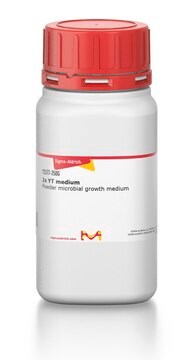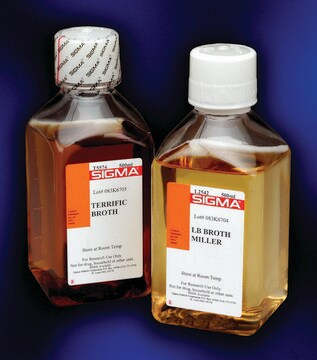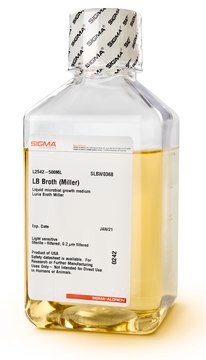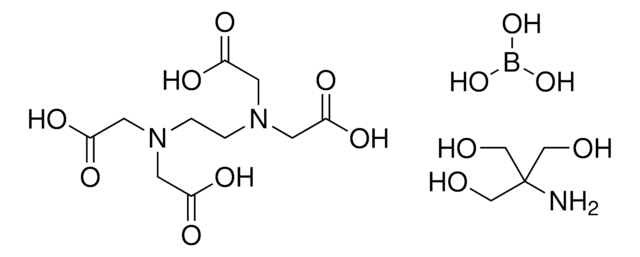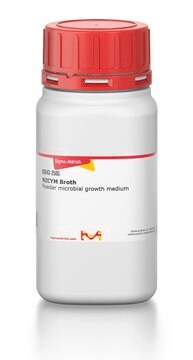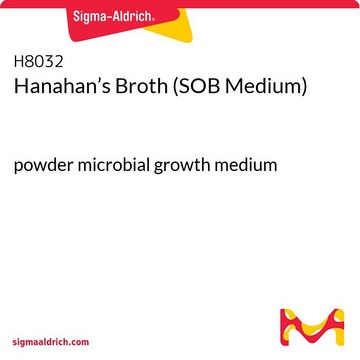T9179
Terrific Broth
EZMix powder microbial growth medium
Sinonimo/i:
TB media
About This Item
Prodotti consigliati
Grado
for molecular biology
Livello qualitativo
Descrizione
TB; quick dissolve, dust-free formulation
Sterilità
non-sterile
Forma fisica
powder
tecniche
microbiological culture: suitable
applicazioni
agriculture
food and beverages
microbiology
Temperatura di conservazione
room temp
Compatibilità
nonselective for Escherichia coli
nonselective for coliforms
Descrizione generale
Applicazioni
Terrific broth has been used:
- as a medium for selective growth of E.coli BL21 (DE3) V2RpRARE expressing MLL SET (nuclear proto-oncogene) domain in pET28GST-LIC
- to grow BL21 (DE3) cells containing plasmid expressing IL-8 (interleukin-8)
- Terrific broth is also suitable for use in bacterial suspension (Bacillus subtilis strain 1085B)
Caratteristiche e vantaggi
- Granulated, dust-free format for safer handling and faster mixing
- A budget-friendly alternative to liquid
- Modified formulation (without glycerol)
- Easy scale-up using larger package sizes
Componenti
23.6g/L Yeast Extract
11.8g/L Tryptone
9.4g/L K2HPO4
2.2g/L KH2PO4
Ricostituzione
Note legali
Prodotti correlati
Codice della classe di stoccaggio
11 - Combustible Solids
Classe di pericolosità dell'acqua (WGK)
WGK 3
Punto d’infiammabilità (°F)
Not applicable
Punto d’infiammabilità (°C)
Not applicable
Certificati d'analisi (COA)
Cerca il Certificati d'analisi (COA) digitando il numero di lotto/batch corrispondente. I numeri di lotto o di batch sono stampati sull'etichetta dei prodotti dopo la parola ‘Lotto’ o ‘Batch’.
Possiedi già questo prodotto?
I documenti relativi ai prodotti acquistati recentemente sono disponibili nell’Archivio dei documenti.
I clienti hanno visto anche
Il team dei nostri ricercatori vanta grande esperienza in tutte le aree della ricerca quali Life Science, scienza dei materiali, sintesi chimica, cromatografia, discipline analitiche, ecc..
Contatta l'Assistenza Tecnica.


